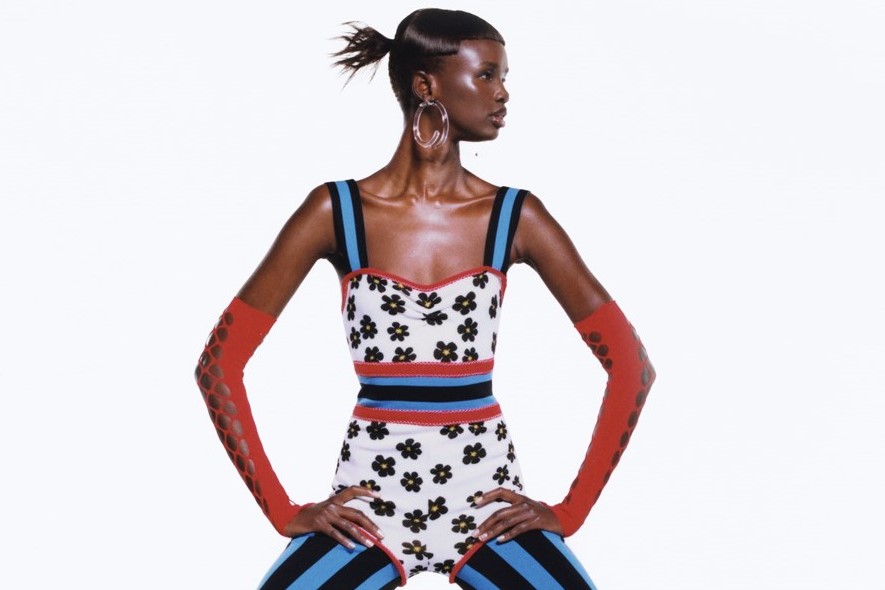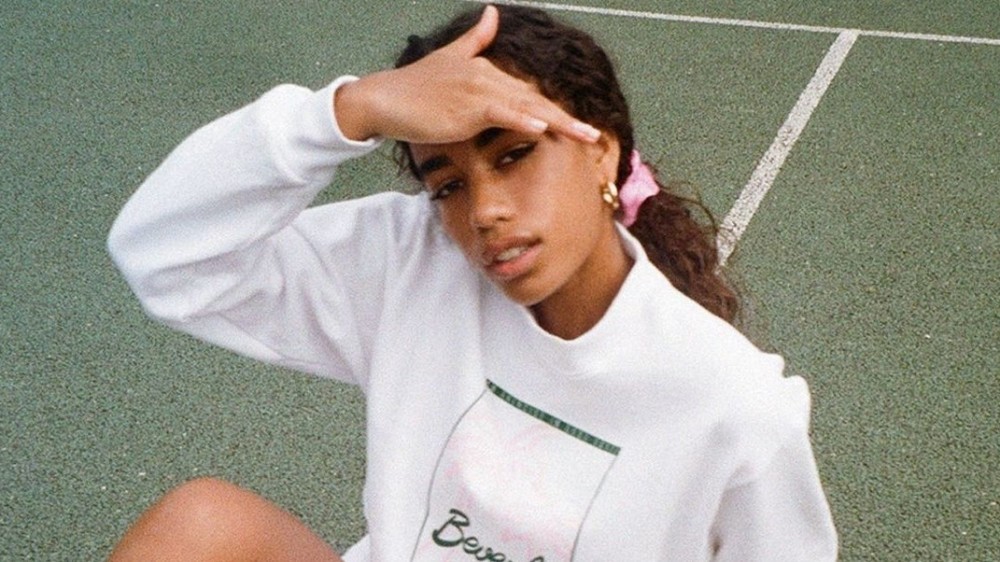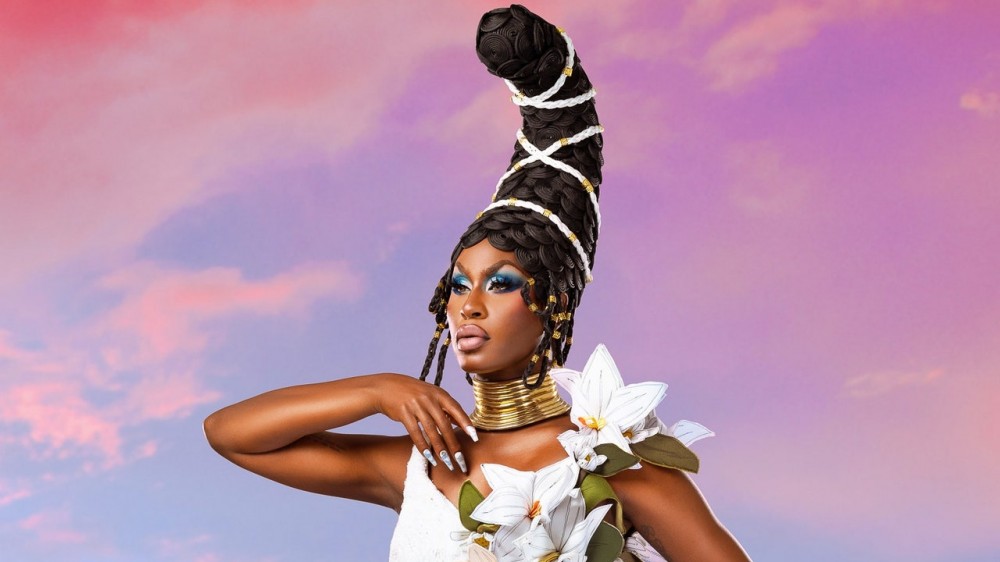
Francesco Risso talks turning Marni inside-out and upside-down
Late last summer, the invitations to Marni’s SS22 show began landing in the inboxes of editors and buyers. There was an unusual request attached: every attendee was invited to visit the brand’s ateliers in the days leading up to the show, where they would be fitted in a full Marni look. “We went back and forth a lot discussing whether or not to do it,” says creative director Francesco Risso. “But after two years had passed, and we were coming back to the physical realm, it just felt right. I remember returning from my summer holidays and having this moment of… not panic, I don’t think, but certainly a state of fear. Like, is everybody actually going to wear Marni? I told some of my friends and they just said, ‘You’re fucking crazy.’”
There was method in Risso’s madness, though. There are fashion shows, and then there are fashion shows. The latter doesn’t necessarily mean bombastic spectacles featuring thousands of attendees and blockbuster musical headliners, but shows that expand the possibilities of what the simple act of presenting clothes in front of an audience can look like, infusing a sense of real meaning into a format that is repeated thousands of times, twice a year, every year. It’s easy to drift into hyperbole when talking about an ambitious fashion show, but the nerve behind Marni’s latest offering does feel rare. “We had to do 500 fittings in one week,” says Risso of the military-level operation that brought his vision to life. “We were very organised, and at the end of the day what I’m most proud of is my team.”

The final product was something to be proud of. A motley cast of faces big and small – from house muses Jess Maybury and Paloma Elsesser to creatives Lauren Auder and Mykki Blanco, and those intimately involved with the behind-the-scenes team, including casting director Walter Pearce and Risso himself – weaved through the rickety wooden structure that held the audience. With this palpable communal energy, the amphitheatre-like space began to feel less like a conventional seating set-up and more like an enormous, all-encompassing hug. “In the audience, there were a lot of lovers,” says Risso, wistfully. “Clients, friends, students, the press, buyers. It was a very mixed audience – it was not a press-oriented audience, it was very much balanced in that sense. I really treasured that.”
Right now, sitting calmly in the surroundings of his studio in Milan, it’s hard to picture Risso as the mad scientist lording over his team, announcing his latest fantastical, ambitious idea. But Risso’s signatures have always blended a childlike sense of naivety with the kind of wild eclecticism and boldness that could only come from someone with innate confidence in what they’re doing. To truly understand Risso, you have to start from the beginning – and more specifically, his unconventional upbringing. Born in 1982 on a boat off the coast of Sardinia, Risso spent his youth bouncing around a sprawling, chaotic home filled with family in the port town of Genoa. “I was living in this huge house with five sisters and one brother, all our grandparents were living there, and I was the youngest. It was really awkward and really loud, and really difficult to be a child in that situation, because I was very quiet. I still talk about it with my therapist,” he says, laughing.

Risso’s first entry to the world of design came after rootling around in his siblings’ wardrobes, ripping apart their clothes then fusing them back together to create wonderfully wonky, Frankensteinian garments whose legacy can be felt, palpably, in his designs today. “I literally just took their clothes, cut them up, and made new things,” he remembers. “Now I laugh about it, but at the time I thought I was doing a terrible thing – that there was something wrong with my personality, or that it was vindictive in some way, like I was taking revenge on my family. But after many years I abandoned that practice because I didn’t have so many wardrobes to go through any more. At 16, I grew up and moved away.”
Risso had honed his sewing skills with a little help from his grandmother, who was a well-known tailor in Genoa, before leaving home as a teenager to study at the prestigious Polimoda school in Florence. “I was making my own clothes every day,” says Risso. “It was my own practice, just making and not knowing anything about fashion or references or anything. It was a pure need to express myself in some way other than words.” Stints at the Fashion Institute Technology in New York and studying for a masters at Central Saint Martins under Louise Wilson followed, after which he was quickly recruited to work for Anna Molinari at Blumarine, whose sense of whimsy appealed to Risso. It was upon joining Prada in 2008, however, that Risso’s real education began, with the brand’s subversive approach to beauty radically reshaping his own outlook. In 2016, finally, he was announced as the new creative director of Marni.
“In the audience, there were a lot of lovers. Clients, friends, students, the press, buyers. It was a very mixed audience – it was not a press-oriented audience, it was very much balanced in that sense. I really treasured that” – Francecso Risso
He may be one of Milan’s most beloved designers right now – a rare bright light of innovation in the at-times staid landscape of Italian fashion – but this level of success was far from guaranteed. Risso’s debut offering, sent down the runway in February 2017, drew mixed reviews, to put it politely. Many women had a sentimental attachment to Marni as a reliable source of colourful, off-kilter riffs on wardrobe staples. Consuelo Castiglioni had founded the brand in 1994, and shaped it firmly in her image. There wasn’t a lot of patience for Risso to find his footing. The former British Vogue editor Lucinda Chambers, who had worked closely with Marni in the past, declared in a controversial interview for Vestoj that “Marni is no more.”
As all the best collections do, it took a few months for its aesthetic ingenuity to reveal itself. “Look, I get it,” says Risso. “I mean, this world we live in, the fashion critic can be anywhere.” As he sees it – and it’s easy to see why – that’s not a bad thing. “You know, I’m not Consuelo in any shape or form, so it wouldn’t be wise for me to even try to be her. She comes from a different perspective, time and community. I relate profoundly to her passion, and I love the Marni of the past.” On the subject of Marni’s various phases over the years prior to his taking the helm, Risso is diplomatic. “I’m sure there are always going to be people who will never be up for it, and people who will also be very up for it,” he says, before pausing. “That’s fine. Thank God the world allows for that.”

Risso fully hit his stride with his spring 2018 collection for the house, offering a riposte to his doubters in the form of a collection that had an undeniable, intoxicating charm. Inspired by English gardens and Tim Burton, Risso’s topsy-turvy vision chopped and screwed silhouettes and patterns from across the decades, making for a riotous kaleidoscope of bold florals, plaids and dazzling crystal embellishments, and featuring a textural smorgasbord running the gamut from horsehair to taffeta and duchess satins. It was as striking and avant garde as it was immediately desirable, and marked Risso out as Milan fashion’s very own answer to Willy Wonka – a creator of weird and wonderful sartorial confections.
In the seasons since, Risso has continued to go from strength to strength. Part of the designer’s appeal lies with the tangible air of community he’s fostered around the brand – one that was felt most strongly at his last show, perhaps, but that has always been present. Throughout the pandemic, the importance of this only became more pronounced for Risso. “Since COVID created this very strong sense of separation, it made us all think about how important it is to create a connection between us and the clients – although I don’t like to call them clients, they’re more like Marni lovers,” he says, smiling. “I think what was really revelatory for me was the ability to remove this gap that we create in fashion, for some reason, between the maison and the people who actually buy the clothes. One hundred years ago, the designer would make the clothes, they would call their clients, do their show, and the clients would buy those things. There was an immediate connection. During COVID, we’ve been talking about that a lot: how to recreate that interaction between the brand and people shopping in the stores. So this show was a step towards that. Everybody felt like they were part of something in that moment. It was extremely beautiful.”
“Since COVID created this very strong sense of separation, it made us all think about how important it is to create a connection between us and the clients – although I don’t like to call them clients, they’re more like Marni lovers” – Francesco Risso
It might sound obvious, but for Risso, the process of putting last season’s show together served as a powerful reminder of the shared joy that can emerge from the act of making clothes, then watching someone take pleasure in wearing them. “It made me really think about the real value of what we do, which is making clothes first and foremost,” he explains. “Making clothes for people who enjoy them, or who want to use them to express themselves or to make themselves feel more empowered or soft or loving, all those various personalities and emotions. In a way, it was a big celebration. A celebration of just being together.” There is nothing more cheering for Risso, he adds, than seeing somebody wearing one of his designs out in the wild. “It works hand in hand with what we do in the studio, where we pass it on to people in our circle who can interpret the clothes. The designs are never finished in the studio. The people who walk in the show even inform a lot of what we do, through their gestures, through their being, through sometimes working literally with us.”
Working closely with Rachel Chandler and Walter Pearce of New York casting outfit Midland Agency, whose MO is spotlighting new faces with personality and an unconventional beauty, this community has only continued to expand, now encompassing a rich tapestry of creatives of all stripes. “I think a beautiful thing that has happened with time is that we are embracing a chosen family,” says Risso. “It’s not about picking here and there because they represent something. Things happen naturally, there’s this sense of osmosis: knowing people, bringing in friends, friends bringing other friends, and maybe working with someone new so that person becomes part of the mix.”

Risso’s unorthodox approach to fostering the community behind the brand is reflected in his designs, too. While his first collections may have been defined by his magpie eye for pulling various elements from fashion history and sticking them in a blender to create something thrillingly new, he’s slowly but surely established his own set of signatures. One recurring motif is his use of stripes, which initially inspired Risso for their connotations with uniforms. In his hands, of course, they recall anything but: whether splashed across jackets in sweeping, painterly streaks or strung together as wide strips of fabric that billow in the wind. For Risso, stripes an expression of unity, rather than uniformity – something he believes we all need a little of right now. “It’s a beautiful time to celebrate love and connection after being so far apart for so long,” he says.
What strikes you most about Risso, both the man and the designer, is this irrepressible sense of optimism. His clothes may be outre but, as he sees it, they are really about finding joy in the everyday, or about finding beauty in the unlikeliest of corners. It’s a spirit he’ll be continuing to channel as his next collection rapidly approaches, even if he promises it will represent something of a pivot from the theatrical, convivial atmosphere of his previous show. “This season is going to be completely different, but I would love to try and keep up that energy,” he says. “We’re at one of those pivotal moments when you don’t really understand what’s happening, if there’s going to be a major drama at the end. You have to just keep working non-stop, day and night, with all the seamstresses and everybody making. We’re all united in working together to make this moment happen. It’s great, to be honest, I love it. It’s one of the best times of the season, as we’re all hand in hand, you know?”
Risso is staying tight-lipped for now, but you don’t exactly have to be an oracle to know that his audience will, once again, be in for a riot. “I’m going to fulfil my romantic side,” says Risso, the cheeky Italian lilt in his voice providing the aural equivalent of a wink. “I do my best.”




